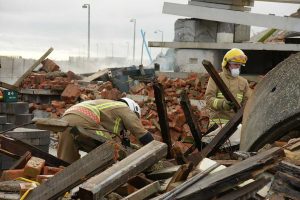Steel is one of the most widely used materials in the world and for good reason. This versatile and durable metal has a wide range of applications, from construction and engineering to consumer products and transportation. Here are five interesting facts about steel that you may not have known before:
Steel is an alloy
Steel is actually an alloy of iron and carbon, with other elements such as manganese, silicon, and sulphur added in small amounts to give it specific properties. The amount of carbon in steel determines its hardness and strength, with high-carbon steel being the strongest and hardest. Steel’s combination of iron and carbon gives it several other desirable properties, such as corrosion resistance, ductility, and toughness.
Steel’s alloy composition allows for a range of applications that require different levels of hardness and strength. Low-carbon steel is used in automobile bodies and construction materials, while high-carbon steel is used in cutting tools and machinery.
Steel alloys can also be customized with other elements to create specific properties, such as nickel and chromium for stainless steel or molybdenum for high-strength steel. These properties make steel a highly adaptable material that can meet a variety of needs.
Steel is recyclable
Steel is one of the most environmentally friendly materials around. Not only is it highly durable and long-lasting, but it is also 100% recyclable. Recycling steel requires only a fraction of the energy and resources needed to produce new steel, and it produces much less carbon dioxide emissions. In fact, every tonne of recycled steel saves 1.5 tonnes of iron ore, 0.5 tonnes of coal, and 40% of the water used in production.
The recycling process of steel involves melting down scrap metal and reusing it in new products. This process saves energy and resources while reducing the amount of waste that ends up in landfills. Steel is also highly valuable as a recyclable material, with scrap metal prices often surpassing other recyclable materials such as plastic and aluminium.
Steel’s recyclability and sustainability make it an excellent choice for businesses and individuals who prioritize environmental responsibility.
Steel is strong and durable
One of steel’s most important qualities is its strength and durability. Steel is incredibly strong and can withstand high levels of stress and tension without breaking or deforming. It is also highly resistant to wear and tear, making it ideal for use in construction, engineering, and manufacturing. Steel can last for decades or even centuries, making it a highly sustainable material choice.
Steel’s strength and durability make it a popular choice for infrastructure projects such as bridges and skyscrapers. Steel’s high strength-to-weight ratio also makes it an ideal choice for transportation, where it can be used to make lighter, more fuel-efficient vehicles.
Additionally, steel’s durability makes it a popular choice for consumer products such as appliances, furniture, and tools. Steel’s resilience and longevity make it a valuable material in a wide range of applications.
Steel has a long history
Steel has been used for thousands of years, with evidence of iron and steel tools dating back to the Bronze Age. However, it wasn’t until the 19th century that steel production became a major industry, thanks to innovations such as the Bessemer process and the Siemens-Martin process. Today, steel production is a multi-billion pound industry that employs millions of people worldwide.
Steel’s long history has allowed for a deep understanding of its properties and applications. Early steel production involved the heating of iron ore with charcoal, a process that was time-consuming and labour-intensive. The Bessemer process, developed in the 1850s, allowed for the mass production of steel by introducing oxygen to the molten iron to remove impurities.
This made steel production faster and more efficient, leading to an explosion in demand for steel. Today, steel production has become even more sophisticated with the development of new production techniques and the use of advanced technology. Steel continues to play a vital role in modern society, from infrastructure projects to consumer products.
Steel has a variety of types and uses
Steel comes in many different types, each with its own unique properties and uses. Some common types of steel include stainless steel, tool steel, and carbon steel. Stainless steel is highly resistant to corrosion and is often used in medical equipment and kitchen appliances.
Tool steel is incredibly hard and is used to make cutting tools and other machinery components. Carbon steel is widely used in construction and engineering, thanks to its strength and durability.
The variety of steel types allows for a wide range of applications, from high-tech medical equipment to heavy-duty construction materials. Stainless steel’s corrosion resistance makes it an ideal choice for food processing and medical equipment, while tool steel’s hardness makes it perfect for cutting and machining.
Carbon steel’s strength and durability make it a popular choice for building construction, automotive components, and infrastructure projects such as bridges and pipelines. Steel’s versatility and range of uses make it a valuable material in many industries.
Conclusion
In conclusion, steel is a fascinating and versatile material that plays an important role in our daily lives, and even more so when constructing steel framed buildings.
By understanding its properties and uses, we can better appreciate this remarkable material and its contributions to society. Steel’s alloy composition, recyclability, strength and durability, long history, and variety of types and uses make it a vital material in a wide range of industries.
Whether in construction, engineering, transportation, or consumer products, steel is an essential material that continues to shape the world around us.




